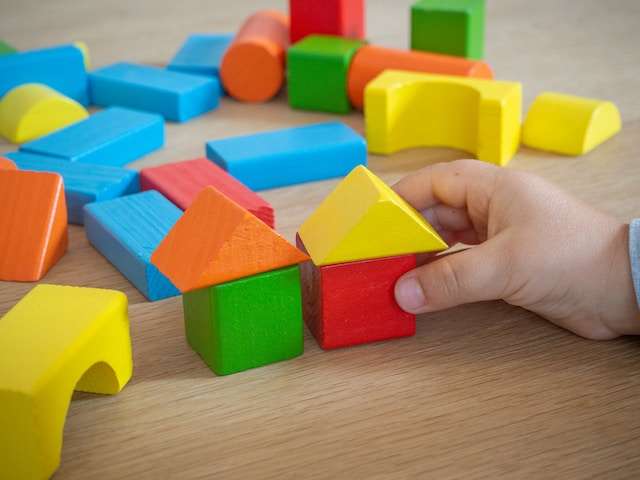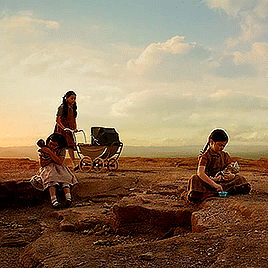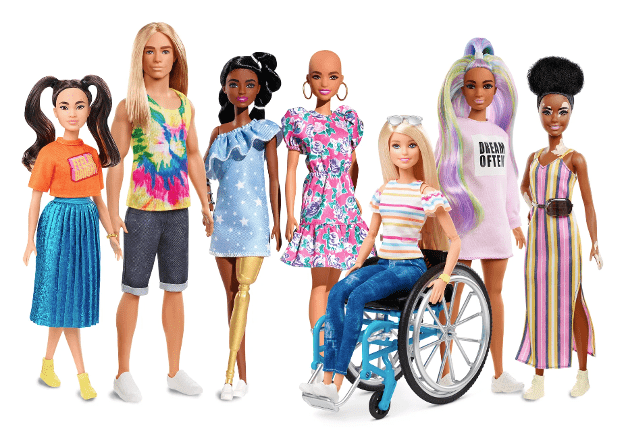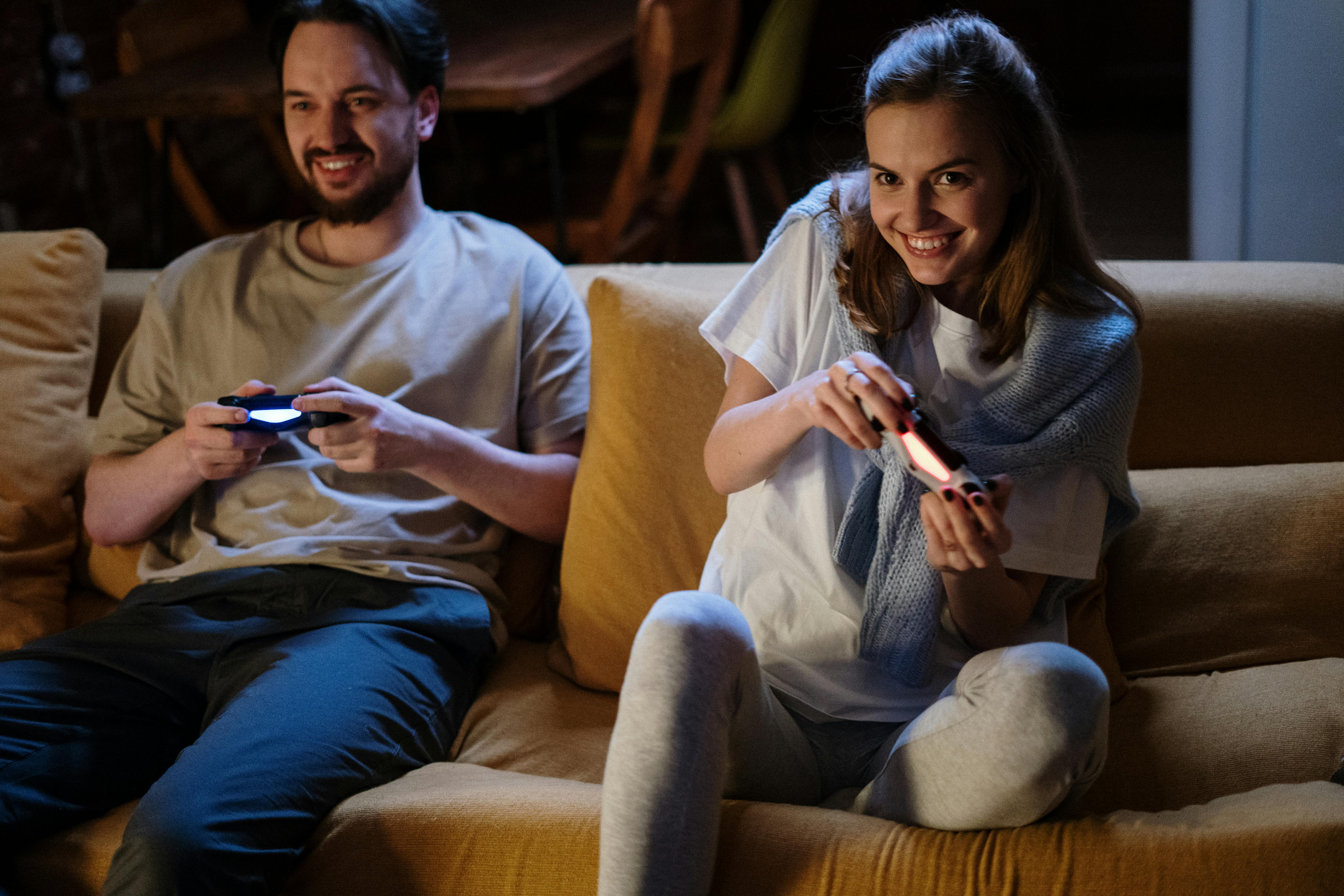Beyond Play: The Wonderful World of Toys, Learning, and Kidults in the UK
Appinio Research · 16.08.2023 · 16min read

Back to Blog
Today we’ll explore the captivating world of toys, a realm where dreams come to life, where nostalgia intertwines with innovation, and where imagination knows no bounds.
We asked 1000 Brits how they shop for toys, who they buy them for and what they buy we're here to explore the nitty-gritty of this world and uncover consumers' needs and wishes.
Buckle up as we embark on a journey that spans generations, from the days of handmade wooden toys to the era of cutting-edge digital playthings.
Key takeaways
- LEGOs pave the way to the toy store
Building blocks and constructions like LEGO are the most bought toys (54%), followed by stuffed animals and plushies at 49% and creativity stimulating toys at 46%.- Design toys with Diversity and Inclusion in mind
The Appinio Hype Tracker reveals that diversity and Inclusion are becoming an important part of the public discourse even when it comes to Toys. Brits (44%) concur that toys can influence society's perception of diversity and inclusion, and inclusive design is breaking down barriers in the toy industry.- The Kidult phenomenon: adults' fascination with toys
41% of Brits are buying toys for themselves. Kidults are not only reliving their childhood nostalgia but are actively collecting and showcasing toys. This phenomenon is driven by a sense of belonging to fandoms and communities centred around various genres like comics, superhero movies, and anime. Toys are not exclusive to children and can hold a special place in the hearts of adults, making a positive impact on the toy industry's growth.
💡Ready to always win your game? Then download the Hype Train Report for free!
📊 Or maybe you want to play with data? Head over to our dashboard!
Evolution of toys: from tradition to technology
Picture this: children in ancient civilizations playing with hand-carved dolls, wooden horses, and spun tops.

(If you watched the Barbie movie, you know where this comes from)
Fast-forward through time, and we're immersed in the age of plastic wonders – action figures, Barbie dolls, and board games that became staples of playtime. Life in plastic is fantastic, they say.
Today, we stand at the crossroads of tradition and technology, with smart gadgets, interactive robots, and virtual reality experiences redefining how we play.
Toys are not just playthings; they're mirrors reflecting the aspirations and innovations of their time. They've accompanied us alongside history, adapting to societal shifts and technological leaps.
Exploring the spectrum of toy types
Alright, let's explore what’s into the toy chest!
First up, we've got the brainiacs' delight: educational and STEM toys. These toys sneakily teach kids about science, technology, engineering, and maths while they're having a blast. Think building blocks that spark architectural genius and chemistry kits that make you a mad scientist in training.
Over one in two (54%) Brits indeed buy building blocks for the kids in their life, making this the most popular toy for British kids.
Soft and huggable, stuffed animals and plushies are more than toys – they're confidantes, bedtime companions, and a cosy trip down memory lane. From teddy bears to quirky characters, they bring comfort and smiles.
Nearly one in two (49%) British toy buyers choose plushies for the kids in their life.
And yes, adults love them too, turning collecting into a delightful hobby that spans generations.
Got a little Picasso on your hands? Creative and artistic expression toys are the answer. From finger-painting sets to DIY jewellery kits, these toys nurture imagination and self-expression, turning your living room into an art studio.
This is the third most popular toy to buy for British respondents, with 46% buying them for the children in their circle.
Figure toys aren't just toys; they're an entire world contained in a small plastic animal or hero. Superheroes, space warriors, and adventurers come to life as you create your own stories or display them proudly. These small wonders pack big excitement. This is the fourth most popular toy bought by Brits (43%).
Technological and digital toys that merge the virtual and real worlds. Video games, robotic pets, and augmented reality games create a whole new level of engagement that keeps kids and adults hooked. This type of toy is also very popular, bought by 40% of British respondents.
For those who love the great outdoors, physical and outdoor play toys are a ticket to adventure. Bikes that zoom, kites that soar, and sports equipment that turns your backyard into a mini-stadium – these toys get the heart racing and the giggles flowing.
Two in five Brits (39%) buy these sorts of toys.
Board and card games, the heart of game night joy. From classics like Monopoly to modern hits like Catan, they're your ticket to strategy, laughter, and friendly rivalry. Roll dice, draw cards, and dive into a world of endless possibilities.
However, they score lower on the ranking of most bought toys (37%), very likely because these types of games can’t be enjoyed by very young players.
Toys as catalysts for cognitive and emotional development
Play is more than just fun and games – it's serious business for young growing minds.
Educational toys aren't just sneaky teachers; they're cognitive superheroes. Building with blocks sharpens spatial reasoning, while puzzles flex problem-solving muscles. It's like mental gymnastics, and kids don't even realise they're learning.
But toys aren't just for brainpower – they're heart healers too. Emotional development takes centre stage as kids engage in role-playing, learning to understand others' feelings and navigate complex social situations. Dolls become confidantes, action figures morph into allies, and tea parties transform into safe spaces for emotional exploration.
Nearly two thirds (63%) of UK respondents buy and gift toys that promote cognitive development, as well as 61% of Brits buying and gifting toys that promote emotional development.
Embracing diversity and inclusion in toy design
The Appinio Hype Train Report on Toys shows that 44% of Brits (strongly) agree that toys wield influence over society's perception of diversity.
Imagine a world where dolls of every ethnicity grace the shelves, where characters with disabilities become heroes, and where everyone feels seen and valued. Inclusive design isn't just a trend – it's a movement that's breaking down barriers and opening up new avenues of play for all children.
“According to Mattel, over half the dolls offered in 2019 were a departure from the original Barbie, and the top-selling doll for almost every week of last year was a curvy black doll from its Fashionista line who wears her hair in an Afro. In the UK, one in four dolls sold is a Barbie with a wheelchair.”
 (Source: Glamour)
(Source: Glamour)
Appinio research indicates that one in two (48%) Brits (strongly) agree there is sufficient diversity in today’s toy market, but the conversation on Diversity, Equity and Inclusion in the Toy industry is not a closed one, and as the industry evolves and this conversation keeps feeding the public discourse we’ll see more and more diverse representations in toy.
The kidult phenomenon: adults' fascination with toys
Who said toys were just for kids?
They got it all wrong.
The kidults, a consumer group which NPD defines as ages 12 and older, recently renamed as "rejuveniles" and "adultescents".
Remember the action figures you used to stage epic battles with? Kidults are not just reliving those battles; they're collecting and showcasing them like prized possessions.
But why the fascination with toys in adulthood? It's not just about nostalgia, playing with toys you always wanted to play with but your parents never bought for you.
It's about healing your inner child. It’s about a sense of belonging, a way to be part of a group, or a fandom.
Think about the massive audience comics and superhero movies have been amassing, think Star Wars, think Disney. Think Japanese hits in the Anime and Manga space.
An incredible example of a toy company tapping into the power of fandoms is FunkoPops.
Funko Pops are collectible vinyl figures known for their distinctive, stylised design and wide range of characters from various pop culture franchises. These figures are characterised by their oversized heads and cute, exaggerated features. Funko Pops cover a vast array of entertainment, including movies, TV shows, video games, comics, and more.
With an ever-expanding lineup, Funko Pops have become highly popular among collectors and enthusiasts of all ages. They often depict iconic characters, fan-favourites, and even niche references, making them a sought-after item for fans to showcase their love for their favourite fictional universes.

You're into superheroes, fantasy, anime, or any other genre?
There’s a Funko Pop waiting for you.
Whether they want to just enrich their collection or actually play the games of their childhood, Kidults are the backbone of the industry and the reason why the toy industry is growing. They have disposable income and they are willing to spend on toys for themselves.
Market trends and insights
For this trip on the Hype Train, Appinio could count on the invaluable expertise of Sarah Gstrein, Global Product Director at tonies®, a German-based company that produces a unique type of audio player and figurine system designed for children. The company's goal is to create a screen-free and engaging experience for children while promoting imaginative play and storytelling. The Toniebox and Tonies have gained popularity for their innovative approach to audio entertainment for kids.
With a degree in psychology, Sarah is passionate about a career in product development with a focus on a strong 'why'. With tonies® she has set out to light up children's eyes and encourage creativity by offering magical adventures in a small playful box.
Sarah has provided Appinio with interesting and conversation-starting hypes that have been tested in the Hype Tracker.
![]()
We can already spot 4 big High Speed Hypes:
- Diversity in doll and action figures
The hype has the biggest buzz and the highest level of awareness among all the others. Brits are talking about this topic but conversations about diversity in toys as popular as dolls and action figures seems to have peaked, the hype has the second lowest level of curiosity.
This could suggest that people are aware of the importance of diversity in these toys and are discussing it, but their curiosity to learn more or engage deeply with the topic might not be as pronounced. This could be due to a variety of factors, such as the topic being well-covered already or individuals feeling that they have a basic understanding of the concept without needing to explore it further. - Mindful play / games for children and adults
This type of game / play involves conscious and attentive play, as well as exercises that help to relax and calm down. It promotes concentration and creativity and creates an emotional connection to the toy.
The hype has the second biggest buzz and second highest curiosity among British respondents. Awareness is also quite high. The combination of high buzz, curiosity, and awareness indicates that mindful play has caught the attention of the audience and is likely a topic of interest and discussion in the community.
This could reflect a growing trend towards seeking not only entertainment but also activities that promote relaxation, concentration, and emotional well-being. - Importance of toys that grow with the child
The hype refers to the importance of toys as companions through childhood. These toys can play an important role in promoting learning, cognitive development, imagination, social skills and emotional expression. The hype generates quite a big buzz (the third biggest) but it sparks the highest level of curiosity among respondents.
The fact that it generates quite a big buzz suggests that the idea of toys that support learning, cognitive development, imagination, social skills, and emotional expression resonates with a substantial audience. This could indicate a recognition of the value of toys that offer more than just entertainment, and are viewed as tools for holistic child development.
The most significant insight here is that the topic sparks the highest level of curiosity among respondents. This could indicate that people are eager to understand more about how such toys work, what benefits they provide, and perhaps even seek recommendations for specific toys that align with this concept. This heightened curiosity might stem from a desire to make informed choices when selecting toys for children, reflecting a trend towards intentional and purposeful parenting or gifting.
- Toys for the whole family
The hype generates the fourth biggest buzz, levels of awareness and curiosity are pretty high as well.
This means there is a strong interest in toys that cater to the whole family, possibly reflecting a desire for inclusive and interactive activities that foster connections and quality time among family members.
Challenges and future directions
As much as the Toy industry looks like the most joyful and fun one, it faces challenges that require thoughtful navigation.
Striking the right balance between traditional play and technological innovation is a tightrope walk. Manufacturers must also grapple with supply chain issues and sustainability and ethical considerations.
As technology becomes more integrated into toys, it’s going to be challenging to find the right balance between digital and traditional play. With concerns about children's increasing screen time, the industry needs to ensure that digital toys provide meaningful and educational experiences without contributing to excessive device use.
However, the future is bright. The enduring appeal of toys will continue to shape an industry that thrives on creativity, learning, and boundless joy.
Conclusion for toy trends
And there you have it – a whirlwind tour of the UK Toy Industry that has stirred our imagination, tugged at our heartstrings, and ignited our curiosity.
From the ancient craftsmen to the tech-savvy designers of today, the magic of toys transcends time and generations. Whether it's a toddler's first cuddly companion or a kidult's prized collectible, toys remind us that play is a universal language that unites us all, after all, we're never too young or too old to play.
Interested in running your own study? Then just speak to our research experts!
Get facts and figures 🧠
Want to see more data insights? Our reports are just the right thing for you!


